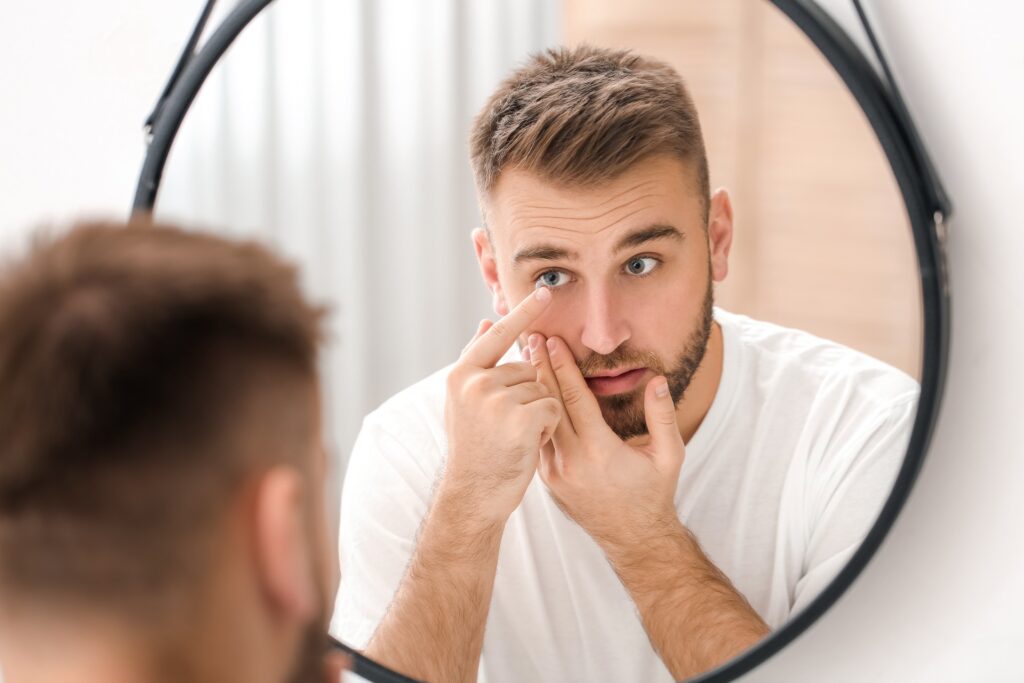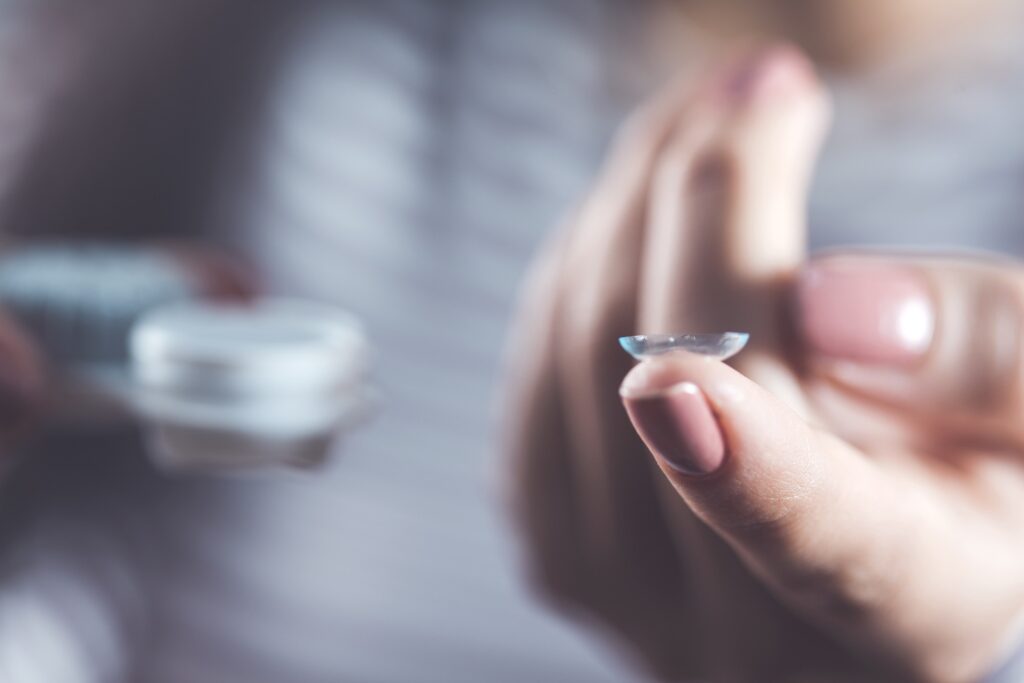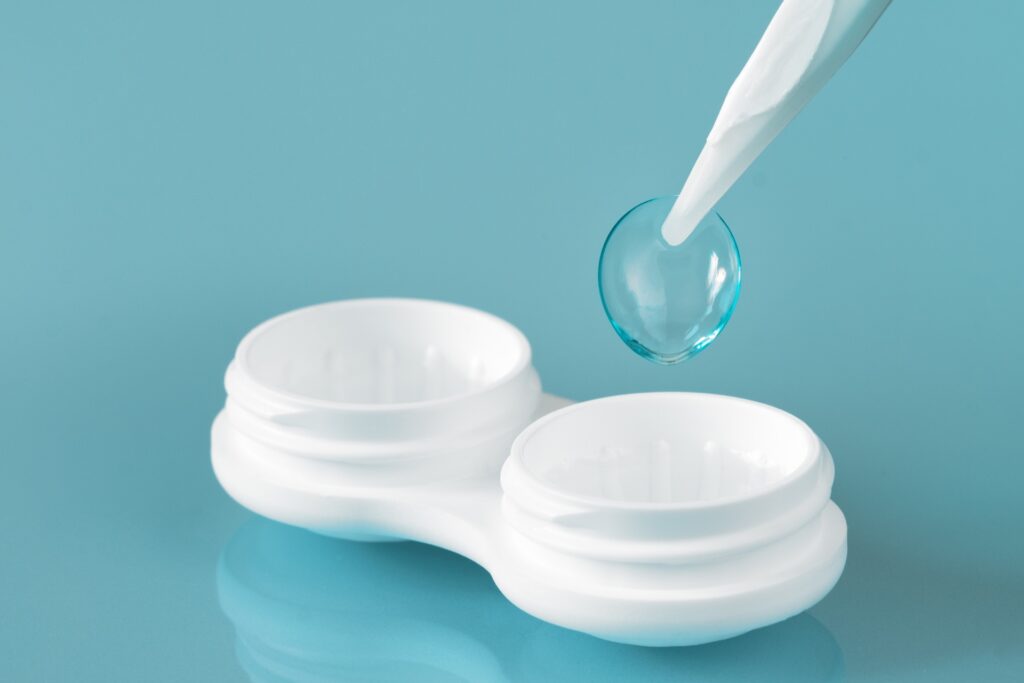Although glasses come in many more varieties than even just 10 years ago, they can be annoying or cumbersome for some people which is where the convenience of contact lenses comes into play.
There is a huge range of contact lenses types and plenty of options to choose from so how do you know which ones to pick?
Below, we detail all the info you need to know about the different kinds of contact lenses.
How Long You Can Wear Each Kind of Contact Lens and When to Replace Them
Contact lenses aren’t like glasses where you only need one pair and your vision is corrected. Because contact lenses sit on the surface of your eye, they need to be replaced regularly. However, how regularly they are replaced depends on the design of the lens.
- Daily wear contact lenses need to be removed before going to bed
- Extended wear contact lenses can be worn overnight, but only for a limited number of nights
- Continuous wear contact lenses are a kind of extended wear contact lenses that can be worn 24 hours per day for up to 30 consecutive days
Even with the proper care and maintenance, contact lenses should be replaced regularly. This avoids bacteria building up and other contamination issues and ensures your eyes stay healthy.
Soft contact lenses are especially important to replace regularly. However, how long you wait depends on their specific type. Thus, they should be thrown out and replaced as follows:
- Discard and replace after wearing for one day: Daily disposable lenses
- Discard and replace after wearing for less than 2 weeks: Bi-weekly disposable lenses
- Discard and replace after every month: Monthly disposable lenses
- Discard and replace after every 6 months (or in some cases longer): Traditional (reusable) lenses
The Different Types of Materials Uses for Contact Lenses
When it comes to choosing a kind of contact lens that works for you it’s helpful to know the kind of materials they use or are made of. The materials used will make a difference not only in comfort but how they affect your vision as well. Your optometrist may recommend one type of material over another depending on your vision correction needs:
- Soft lenses: These are made from gel-like, water-containing plastics called hydrogels and are very thin and pliable. They’re also one of the most common kinds of contact lenses.
- Silicone hydrogel lenses: These are made up of a type of soft contact lens material that allows more oxygen to pass through the lens and reach the front surface of the eye to make wearing them more comfortable. They are also one of the most popular choices for contact lenses.
- Gas permeable (GP) or rigid gas permeable lenses (RGP): Unlike other contact lenses on this list, GP lenses are less flexible but in turn are much better at treating conditions like astigmatism and other refractive errors. Due to their rigid design, they tend to take a little more to get used to but anecdotally people have said they can be just as comfortable as other kinds of lenses.
- Hybrid contact lenses: One of the more advanced kinds of contact lenses, these are some of the most cutting edge when it comes to comfort and design. They are made to have a rigid gas permeable central zone, surrounded by a “skirt” of hydrogel or silicone hydrogel material. Because of this, they offer the comfort of soft or silicone hydrogel lenses with the clarity of GP lenses.
Is It Safe to Use Eye Drops With Contacts?
Contact lenses are designed with all kinds of features nowadays. This includes everything from additional comfort to features like bifocal contacts for astigmatism or reducing dry eyes through specially designed soft contact lenses. One of the features to watch for is compatibility with eye drops. You can use eye drops with some contact lenses, but only use eye drops with contact lenses that are specifically marked as such. Eye drops that don’t make mention of the compatibility shouldn’t be used as they can actually cloud your vision or “gum up” your contact lenses. If you’re not sure which eye drops to look for, your optometrist can recommend the best ones for you to use.
Because there are so many layered options available for contact lenses if you’re not sure what you’d like it’s best to discuss the right options for you with your optometrist.



